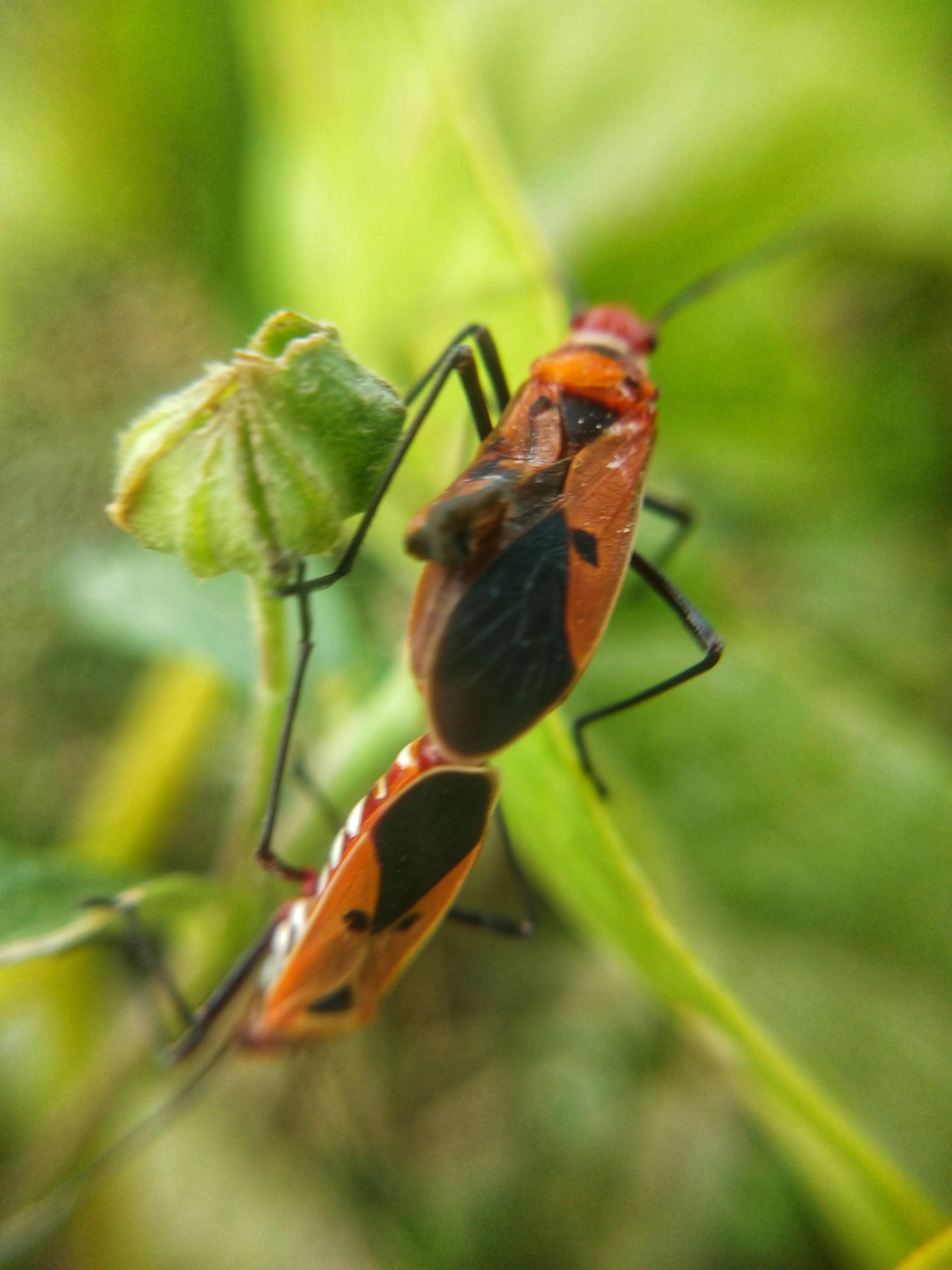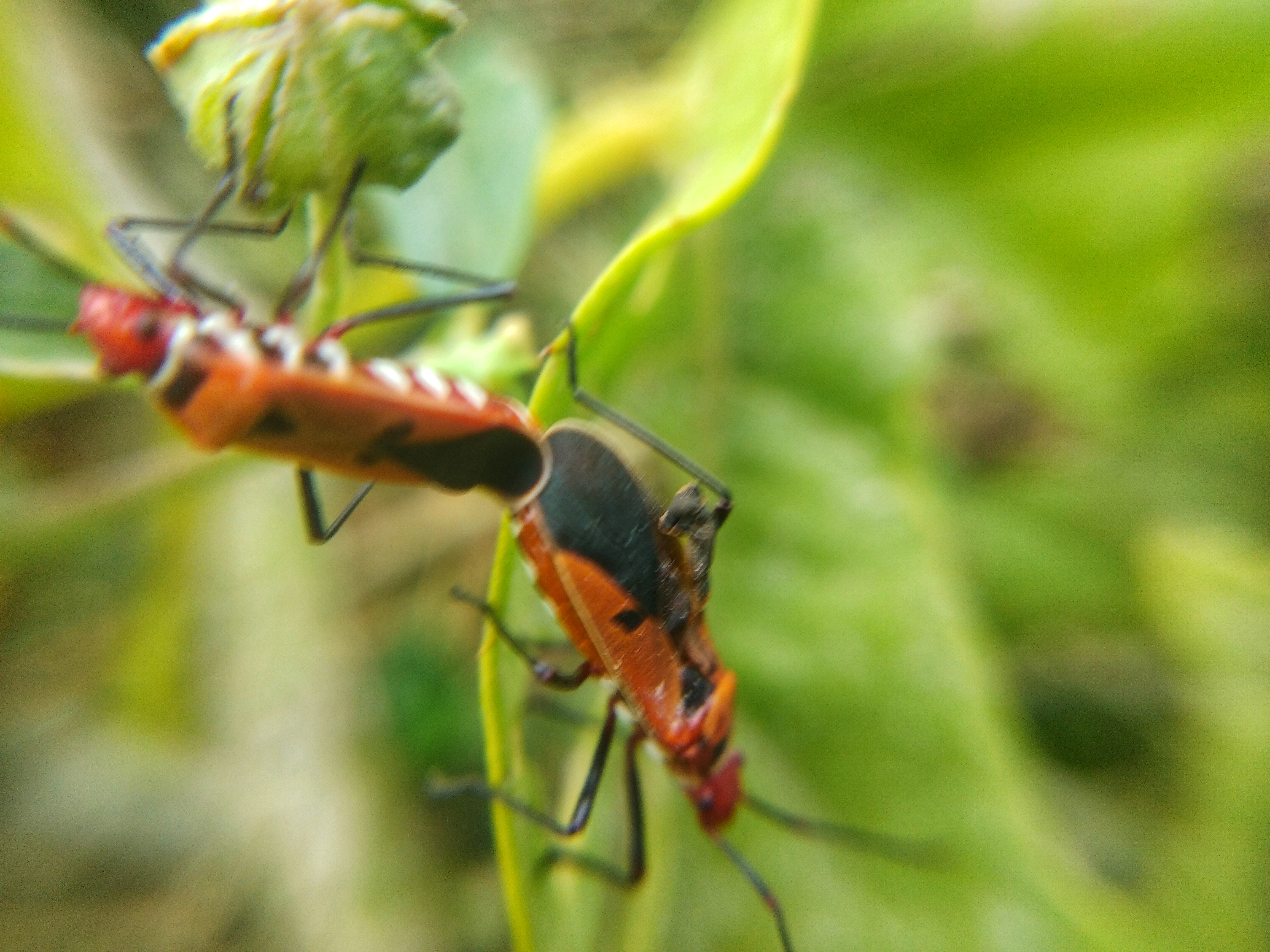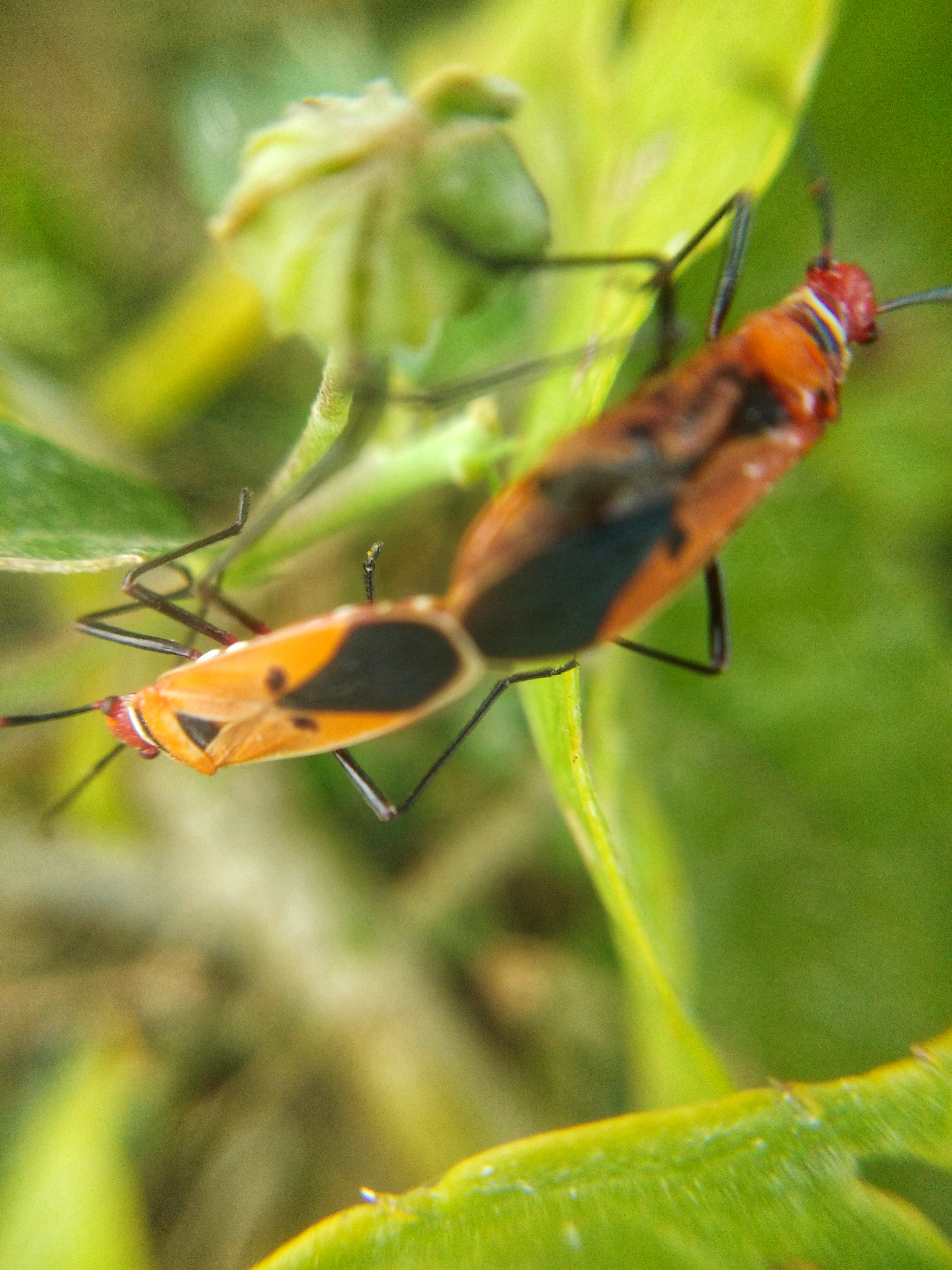5 Interesting Facts About Mr. Pucung Beautiful Insect | 5 Datos Interesantes Sobre El Hermoso Insecto Sr. Pucung [ENG/ESP]
(Edited)
Hello HIVE community,
Have you ever seen these beautiful insects that are mostly orange and have black spots? Yes, the name of this insect is Red Cotton Worm, and in Indonesia it is usually called Mr. Pucung. In the past, it is still often found. Unfortunately, currently it can only be found in green and beautiful places. Here are 5 facts about Mr. Pucung, a beautiful insect.
Alguna vez has visto estos hermosos insectos que son en su mayoría de color naranja y tienen manchas negras? Sí, el nombre de este insecto es Gusano de algodón rojo, y en Indonesia se le suele llamar Sr. Pucung. En el pasado, todavía se encuentra a menudo. Desafortunadamente, actualmente solo se puede encontrar en lugares verdes y hermosos. Aquí hay 5 datos sobre el Sr. Pucung, un hermoso insecto.

- Found in a green environment In the past, you could still find Mr. Pucung in the yard full of greenery. But unfortunately, now it is rarely found if not in planted areas or areas that are still green. Mr. Pucung likes the green area because there is a place where Mr. Pucung can look for raw materials for the confectionery. Mr. Pucung eats the seeds or seeds of plants commonly called cotton plant pests. This green planting area is Mr. Pucung's favorite. Because they can be easily transferred from one plant to another.
- Se encuentra en un entorno verde. En el pasado, todavía se podía encontrar al Sr. Pucung en el patio lleno de vegetación. Pero desafortunadamente, ahora rara vez se encuentra si no es en áreas plantadas o áreas que aún están verdes. Al Sr. Pucung le gusta el área verde porque hay un lugar donde el Sr. Pucung puede buscar materias primas para la repostería. El Sr. Pucung come las semillas o semillas de plantas comúnmente llamadas plagas de plantas de algodón. Esta zona de plantación verde es la favorita del Sr. Pucung. Porque se pueden transferir fácilmente de una planta a otra.

- Known as a plant pest Behind its beautiful appearance, it turns out that dandelions are plant pests. Mr. Pucung usually attacks kapok/cotton, rosella, and okra plants. However, Mr. Pucung usually prefers kapok or cotton as a place to stay. Therefore, if you are in the planting area, Mr. Pucung's appearance will be very disturbing. Because Mr. Pucung eats plant seeds, flowers, and seeds or cotton pods cannot develop.
- Conocido como plaga de plantas Detrás de su hermosa apariencia, resulta que los dientes de león son plagas de las plantas. El Sr. Pucung generalmente ataca las plantas de kapok / algodón, rosella y quimbombó. Sin embargo, el Sr. Pucung suele preferir la ceiba o el algodón como lugar para quedarse. Por lo tanto, si se encuentra en el área de plantación, la apariencia del Sr. Pucung será muy inquietante. Debido a que el Sr. Pucung come semillas de plantas, las flores y las semillas o las vainas de algodón no pueden desarrollarse.

- Reasons for Calling Cotton Plant Pests It is called the Cotton Stainer Bug or Red Cotton Flea because Mr. Pucung eats the seeds of the cotton plant and is often found in clusters on this plant. When Mr. Pucung eats cottonseeds, he will stab them and start eating cottonseeds.
- Razones para llamar plagas de plantas de algodón Se le llama chinche del algodón o pulga roja del algodón porque el Sr. Pucung come las semillas de la planta del algodón y, a menudo, se encuentra en racimos en esta planta. Cuando el Sr. Pucung come semillas de algodón, las apuñala y comienza a comer semillas de algodón.

- Rarely fly with wings Mr. Pucung is between 12mm and 18mm long and is distributed in Indonesia, Nepal, Sri Lanka, India, Bangladesh, Thailand, and Australia. Although dandelions can fly, they rarely fly with wings. Yes, because the leaf branches they avoid are so close they don't need to fly. Mr. Pucung can easily be caught with his bare hands.
- Rara vez vuela con alas El Sr. Pucung mide entre 12 mm y 18 mm de largo y se distribuye en Indonesia, Nepal, Sri Lanka, India, Bangladesh, Tailandia y Australia. Aunque los dientes de león pueden volar, rara vez vuelan con alas. Sí, porque las ramas de las hojas que evitan están tan cerca que no necesitan volar. El Sr. Pucung puede ser atrapado fácilmente con sus propias manos.

- How to reproduce Mr. Pucung During the reproductive process, the adult female Mr. Pucung lays 60 to 90 eggs each and lays them on the soil of the host plant. Hatching can take up to five days, and the nymphs will develop to adults in about 30 to 40 days, eating seeds and flower buds to develop.
- Cómo reproducir al Sr. Pucung Durante el proceso reproductivo, la hembra adulta Sr. Pucung pone de 60 a 90 huevos cada una y los pone en el suelo de la planta huésped. La eclosión puede demorar hasta cinco días y las ninfas se convertirán en adultos en aproximadamente 30 a 40 días, comiendo semillas y botones florales para desarrollarse.
Those are 5 interesting facts about Mr. Pucung's beautiful insect that I read in articles I've read.
Esos son 5 datos interesantes sobre el hermoso insecto del Sr. Pucung que leí en artículos que leí.
0
0
0.000
0 comments